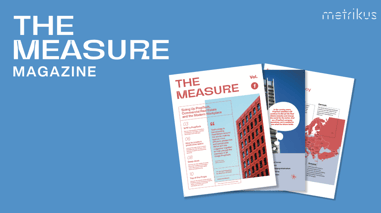How can PropTech make cities more sustainable?
Whether that’s engaging with our office space or home environment, we interact with the built environment more often than not: especially now that it’s estimated we spend 90% of our time indoors. But what we may not realise is how much of an impact these interactions have on the climate and our planet’s natural ecosystems. But it’s not all bad news: PropTech may be one way to reduce these effects and make our buildings and cities more sustainable.
Understanding the issue
So what is the built environment? The Centre for Digital Built Britain defines the built environment as all forms of buildings (residential and commercial), all economic infrastructure (above and below ground), and the urban space and landscape between and around buildings and infrastructure.
New developments in PropTech can help property managers and tenants alike understand the sustainability of their built environments. For this reason, the built environment has come to represent one of the most cost-effective opportunities for tackling climate change and driving low carbon growth. To put this into perspective, the UK’s buildings contribute to 30% of greenhouse gas emissions (BPF) – how can PropTech help to mitigate this problem?
Unexpected emissions
Many offices and workspaces rely on the cloud to store their information. While cloud computing makes life easier with regards to collaborating and sharing data, their data centres use up staggering amounts of energy to keep their servers running.
A Nature Magazine article notes that IT companies - which include manufacturers of digital devices and televisions, as well as internet services and cloud platforms - account for more than 2% of global emissions. This carbon footprint is estimated to equal the aviation industry’s emissions from fossil fuels.
Facility Management in the workplace
Applying PropTech to Facilities Management is a first step to ensuring that buildings can meet the specifications of the tenants that work within them, as well as those managing the building. In this area, PropTech can be used to optimise the performance of a workplace whilst reducing costs and improving business processes.
For instance, implementing interconnected IoT sensors amongst building assets is a great way to monitor building features and identify the need for repair before they break and need to be completely rebuilt. This conserves resources, saves business costs, and allows tenants to continue throughout their day without maintenance downtime disruptions.
The efficient use of PropTech within Facilities Management is a sustainable approach to managing the lifecycle of an asset, which allows for predictive maintenance, ultimately reducing waste and the use of costly resources.
IoT at home
It takes over 50 tonnes of CO2 to build the average UK house. To put this into context, the average person in the UK has a carbon footprint of five tonnes of CO2 per year, so building just one new house emits as much CO2 as someone living an average lifestyle does over a decade. To further add to these statistics, the average UK household emits 2.7 tonnes of CO2 every year from heating their home (all stats: Citu).
IoT home automation can be used in the home environment to control domestic appliances, from complex heating and lighting systems to alarms and home security controls, all of which are connected by a central hub and can be controlled from one point – usually a mobile app.
IoT in the home is an example of how PropTech can improve energy efficiency within a household. For instance, motion sensors can be connected to the lights in a room, ensuring that the lights only consume energy when there are people in the room and light is needed. Smart plugs are also prevalent in smart homes, enabling users to turn lights and other electronic devices on and off while away from home, ultimately reducing costs and energy waste.
BIM (Building Information Modelling)
BIM technologies can help developers utilise building space more efficiently and consume less energy. This is because BIM can take more infrastructural factors into account than a traditional 2D technical drawing. This includes things like width, depth, time, costs, and environmental and sustainability analyses relating to resource consumption when constructing the building.
PropTech can leverage BIM to produce 3D renderings and visualisation platforms that will allow engineers to accurately simulate energy consumption based on highly accurate infrastructural assumptions. The use of BIM in PropTech can help make our buildings and cities more sustainable as it places strong emphasis on planning and testing, which consequently results in a more efficient approach to creating and designing buildings. BIM can enable designers to optimise building projects for maximum sustainability, especially around consumption limitation and energy demand.
BIM can also reduce excess material usage and lighten the amount of waste, thus improving the productivity and overall effectiveness of a building project, especially in the construction stage. BIM clearly has a positive impact on the way design teams and developers think about building projects with regards to sustainability and environmental impact. It can also allow for an assessment of the overall project, from conception to demolition.
Moving forward
There have already been plenty of developments within PropTech that have enabled a more sustainable outlook on the way we engage and conceive of our built environment. PropTech has also allowed us to supervise energy consumption in both commercial buildings and our homes, ultimately helping us minimise energy usage and waste, resulting in minimal environmental impact. As the PropTech industry continues its exponential growth, it should remember the power it has to help the planet.




